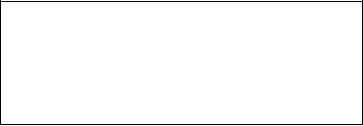
Analyze--Use the information gathered during
the operate step, along with the schematics, diagrams,
CAUTION
and other information in the maintenance manuals, to
Always observe safety and proper maintenance
determine the possible cause of the malfunction. All
procedures when performing troubleshooting and
possible causes of the problems should be identified
maintenance.
during this step.
Isolate--Check each possible cause from the
Q13-20. What are the five steps to proper trouble-
analyze step until the problem is located. The checks
shooting?
should be performed from the most likely to the least
likely cause. Moving parts are more likely to fail than
1. Operate, analyze, isolate, repair, and
stationary parts. If the problem can not be located at this
operate
point, you may need to start over with the operate step.
2. Operate, repair, isolate, troubleshoot, and
You may have overlooked an indication that identifies
operate
the source of the problem.
3. Troubleshoot, repair, analyze, operate,
and sign off the MAF
Repair--During this step, the malfunction(s)
4. Troubleshoot, analyze, isolate, repair, and
discovered in the isolate step are corrected.
operate
Operate--After all repairs are completed, you
Q13-21. What is the first thing you should do when the
must operate the equipment to ensure proper operation.
squadron turns in a tow tractor and says it
You must, as in the first step, verify that all systems are
won't stay running?
operational.
1. Begin troubleshooting as soon as possible
When you use this five-step approach, you should
to reduce turn around time.
be able to find the malfunction on any type of
2. Notify the work center supervisor
equipment or system. The steps work the same for
3. Write a VIDS/MAF
mechanical, hydraulic, or electrical systems with
4. Perform an operational check
consistent reliability.
13-23

